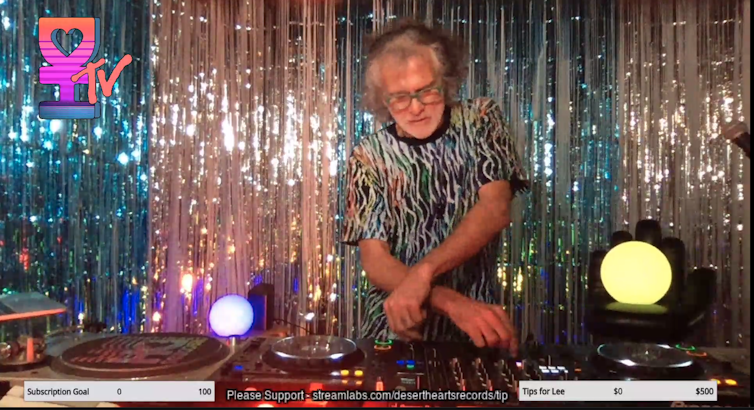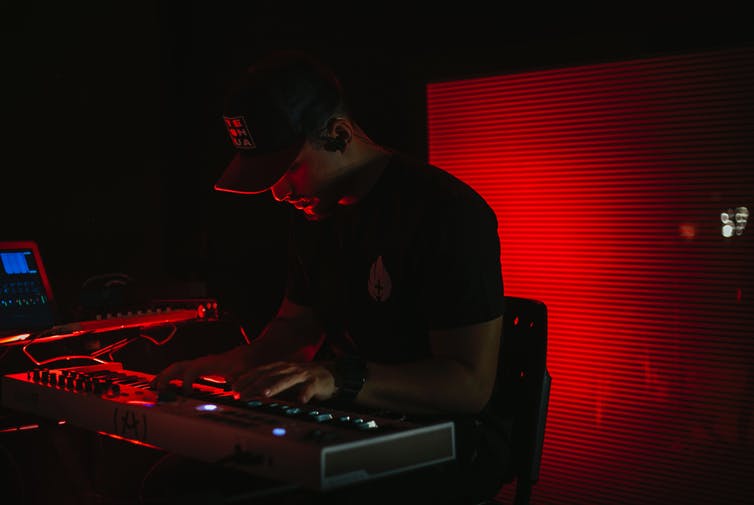Jonathon Hutchinson, University of Sydney
The constraints of coronavirus isolation have closed down most recreational activities, but some creative industries are responding in innovative ways.
I have been researching “digital first personalities” – content producers who build massive (or highly engaged) audiences online first and then often make the jump to traditional media.
Viral: Streamer pasó momento vergonzoso en pleno stream (quechingados.com)
Online spaces and social media platforms including Twitch, Patreon, Streamlabs, OnlyFans, and SubStack are becoming more familiar to consumers. This new frontier of the creative industries has writers, comedians, gamers, musicians and even porn producers adopting new ways to make a buck online that could prove viable beyond lockdown.
Plamping the DJ
Zoom and TikTok have emerged as the go-to social platforms during isolation. Families share meals together online, colleagues enjoy drinks remotely after work, families perform micro-dance challenges together, and trivia has found a new audience.
DJs and their record labels) are providing an innovative model and keeping the good-time vibes rolling during isolation.
The recent phenomenon of “plamping” (a portmanteau of plant and lamp to describe the DJ’s classic background mise en scène) has emerged as a meme. When people are “plamped” they are ready to socially engage with others by tuning in to a live DJ set on Twitch TV and interacting with others in a “hosted” Zoom room.
This is the online equivalent of paying your entry fee to the club and hanging out with your mates. Once there, DJs and their labels encourage participants to donate to support the creators.
As users engage with each other via the chat functionality on the Twitch channel’s stream, they build relationships. Twitch has its own communication style – from platform-specific emojis to catch-cries. As the party kicks into gear, someone will likely ask: “Still plamped?”
New York club Nowadays is hosting virtual DJ sets and asking for financial contributions via Patreon. The highest level of support includes entry to a post-pandemic party.
DJ Khaled and Katy Perry are among high profile artists who will perform live concerts via BeApp, though the platform (sponsored by Coca Cola) will raise funds for International Red Cross.
Front Runner Platforms
Twitch has exploded as the go-to streaming platform during coronavirus times. Italy’s Twitch gaming traffic alone increased by 70%. There are now 5 million monthly streamers on site, up almost 40% on last year.
What is new, however, is the evolution of Twitch (owned by Amazon) for other entertainment areas, including fundraising, house parties, and of course, plamping. It is estimated Twitch’s turnover was approximately US$1.54 billion in 2019 (A$2.32 billion), with creator revenue around US$600 million (A$900 million) per year.
Beyond Twitch, there are a number of other monetised streaming apps and platforms, established to enable creators to earn money while they “perform” their craft.
Patreon, Streamlabs, OnlyFans, and SubStack all have business models in place that enable creators to choose a plan and partner with the streaming app.
Started in 2013, Patreon now claims to be home to over 150,000 creators supported by more than 4 million patrons. A Patreon creator will select either a 5, 8, or 12% membership plan, with each level offering increased member benefits. As the artist earns more money, so does the streaming app.
OnlyFans – where users sell nude pics and videos – has reportedly been booming since lockdown, with a 75% increase in monthly sign-ups and gaining 150,000 new users every 24 hours.

Twitch TV
Can you make a living?
It is estimated Patreon paid its members approximately US$1 billion (A$1.5 billion) up to and including 2019. And with the isolation period in the first three months of 2020, Streamlabs says its active user base has increased by over 30%.
Online gamer Ninja earned US$17 million (A$25 million) in 2019 alone according to Forbes. Social media influencer Caroline Calloway (famous for securing book deals and then not delivering on them) has bragged about a projected US$223,800 (A$337,000) salary from OnlyFans pics, while porn creator Monica Hudt claims she earned over $100,000 on OnlyFans in 2019.
But are these figures representative of online streamers more broadly?
As with all start-up platforms, there are varying degrees of success with typically only a few rising as top earners above the majority of creators. Most streaming creators generally offer branded merchandise alongside their stream to support their income. In the plamping space, DJs are digitally busking by asking punters to leave tips or contribute to their rent.
OnlyFans has been criticised for recent changes to referral bonuses that will cut into earnings.
After lockdown
Some believe creative industries and major events will change forever after COVID-19. If that’s the case, new economic models are required for those who work in this space.
Digital first personalities who integrate streaming apps are leading the way, but it remains to be seen whether they can sustain themselves this way. As with all disruptive technologies, they explode when they emerge, then settle in the larger media framework.
Still with the increased exposure to live streaming during COVID-19, it is likely we will see more integration of online activity even when live events return. And that is a space where more attention is required to ensure those who work in the industry are supported.![]()
Jonathon Hutchinson, Senior Lecturer Online Communication and Media, University of Sydney
This article is republished from The Conversation under a Creative Commons license. Read the original article.


